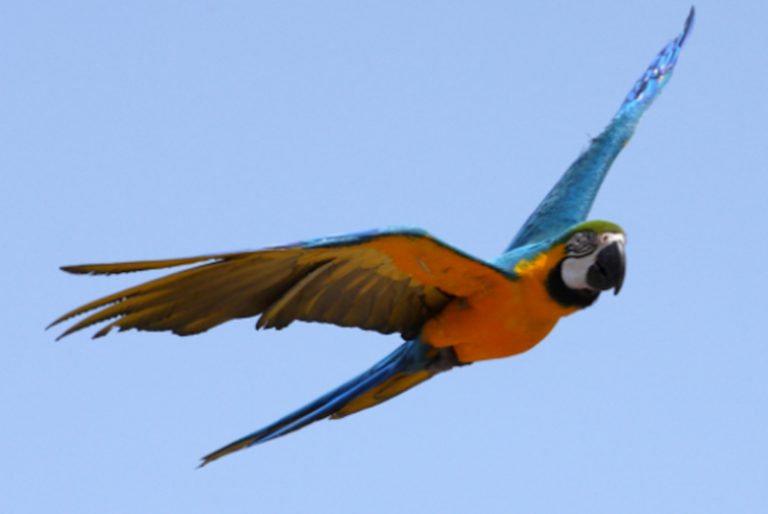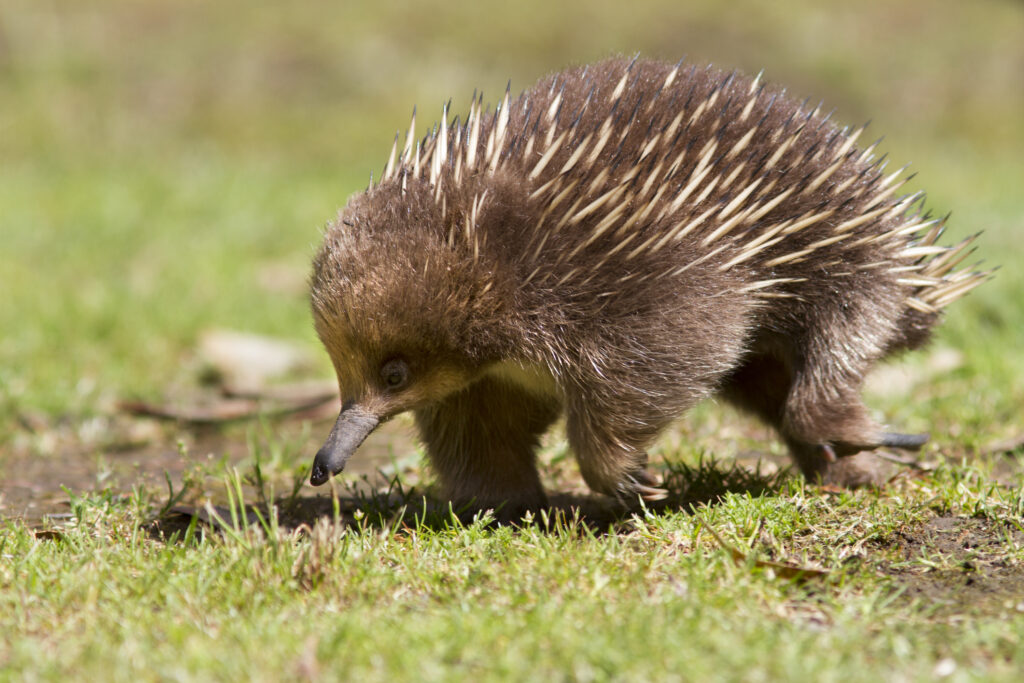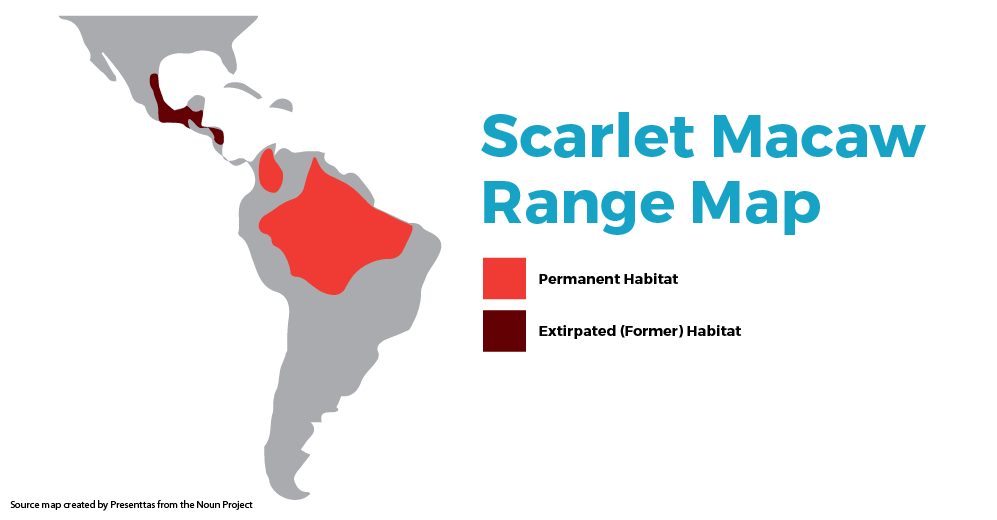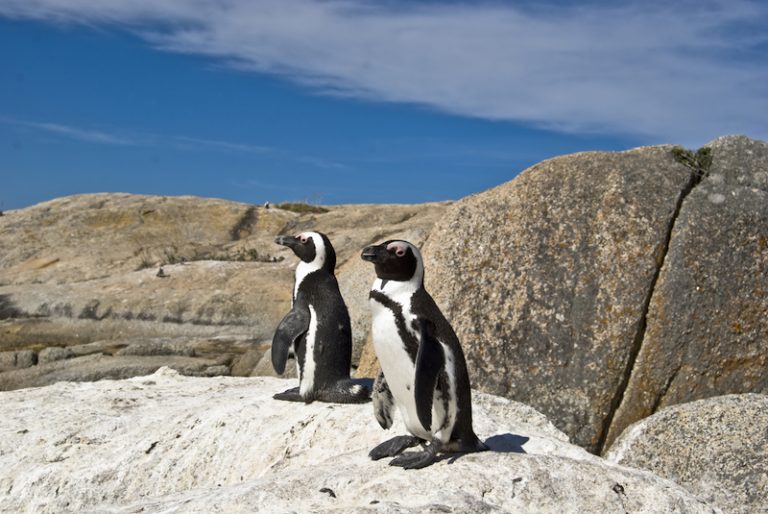Macaw Facts
More about Macaws:
Macaws are the larger ‘New World’ members of the parrot order, Psittaciformes. There are about 376 species of parrots throughout the world and about 20 species of macaws, of which all are listed on the IUCN’s Red List of Threatened Species.
The overwhelming culprits for this are the pet trade and habitat degradation or destruction. Of the listed species, 5 are extinct in the wild, with others listed as endangered, critically endangered, and vulnerable.
Macaws inhabit the American tropics from Southern Mexico to Northern Argentina. They occupy the upper levels of trees and subsist on a diet of primarily seeds and fruits.
Macaws, because of their sheer size, strong voice, and vivid coloration, are one of the few groups of tropical birds firmly etched into the modern consciousness.
Their charisma combined with human population growth has resulted in nearly every member of this group being endangered. The two overwhelming threats in their demise are the pet trade and habitat destruction.
Macaw Facts & Tidbits
- Macaws belong to the Parrot Family. The Hyacinth Macaw is the largest of all the parrots and has a wingspan of approximately 4 feet.
- There are roughly 20 species of macaws, many of which are endangered and critically endangered.
- Macaws are long-lived, living for as long as 60 years in the wild.
- Like other parrots, they are very social birds, often living in flocks of up to 30 birds.
Distribution
While parrots inhabit all of the world’s tropical and subtropical belts, the macaws have a more restricted range within the American tropics from Southern Mexico to Northern Argentina.
Status
Of the 22 species of Macaws listed on the IUCN Red List of Threatened Species, 5 are extinct, 3 are listed as critically endangered, 4 as endangered, and the others as near threatened or vulnerable.
Learn more about threats to birds here.







